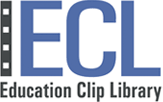How to Use Video to Support Different Learning Styles
In the realm of education, catering to diverse learning styles is essential for engaging students and promoting effective learning. This article emphasizes the importance of considering different learning styles when designing educational content and explores how video can be a powerful tool in supporting these styles. Educators, teachers, and instructional designers can benefit from understanding how to utilize video to enhance student engagement and comprehension. When incorporating video into educational materials, it's crucial to ensure accessibility, interactivity, and affordability. For instance, by utilizing cheap custom essay services educators can access professionally produced videos tailored to specific learning objectives, providing an engaging and cost-effective solution for diverse classrooms.
Understanding Learning Styles and Video Integration
To effectively support different learning styles, it is crucial to comprehend the various types of learning styles and how video can cater to them.
Explanation of different learning styles:
Explore the different learning styles, including visual, auditory, and kinesthetic. Provide a clear explanation of each style and its characteristics. Understanding these styles will help educators identify students' preferences and tailor their teaching approaches accordingly.
How video can cater to different learning styles:
Highlight the advantages of using video to support diverse learning styles. Discuss how visual learners benefit from visual aids and demonstrations, auditory learners thrive through clear explanations and narration, and kinesthetic learners engage with hands-on activities and interactive elements. Explain how video can provide a multi-modal learning experience.
Strategies for incorporating visual, auditory, and kinesthetic elements in educational videos:
Provide practical strategies for designing educational videos that cater to different learning styles. Explore techniques such as using visuals and graphics for visual learners, incorporating clear and engaging narration for auditory learners, and integrating interactive elements and demonstrations for kinesthetic learners.
Designing and Creating Engaging Videos for Different Learning Styles
To maximize the impact of educational videos, it is essential to consider the specific needs of visual and auditory learners.
Tailoring video content to visual learners:
Discuss methods for creating visually appealing videos that capture the attention of visual learners. Explore the use of graphics, images, diagrams, and animations to enhance comprehension and engagement. Provide examples and tips for effectively utilizing visual elements in educational videos.
Addressing the needs of auditory learners:
Share strategies for creating audio-rich videos that resonate with auditory learners. Discuss the importance of clear and concise narration, appropriate tone and pace, and the use of sound effects or background music to enhance learning. Offer insights on optimizing audio elements in educational videos.
Implementing Video in Instructional Settings for Maximum Impact
To ensure the maximum impact of video in educational settings, educators should focus on integrating video into lesson plans and providing flexibility and accessibility.
Integrating video into lesson plans and curriculum:
Highlight the significance of incorporating video seamlessly into lesson plans and curriculum. Discuss strategies for identifying suitable video resources, determining appropriate video lengths, and integrating videos to support learning objectives. Emphasize the importance of aligning videos with specific educational goals.
Providing flexibility and accessibility for learners with different preferences:
Address the diverse preferences of learners by offering flexibility and accessibility options. Discuss the importance of providing closed captions or transcripts for students with hearing impairments. Explore the benefits of allowing students to control the pace of video playback, providing options for interactive elements, and ensuring video accessibility across different devices.
Conclusion:
By understanding and embracing different learning styles, educators can harness the power of video to support student engagement and comprehension. Designing and delivering engaging videos tailored to visual, auditory, and kinesthetic learners can enhance the learning experience. Through thoughtful integration and accessibility, educational videos become a valuable tool in the educator's toolbox, promoting inclusive and effective teaching.



